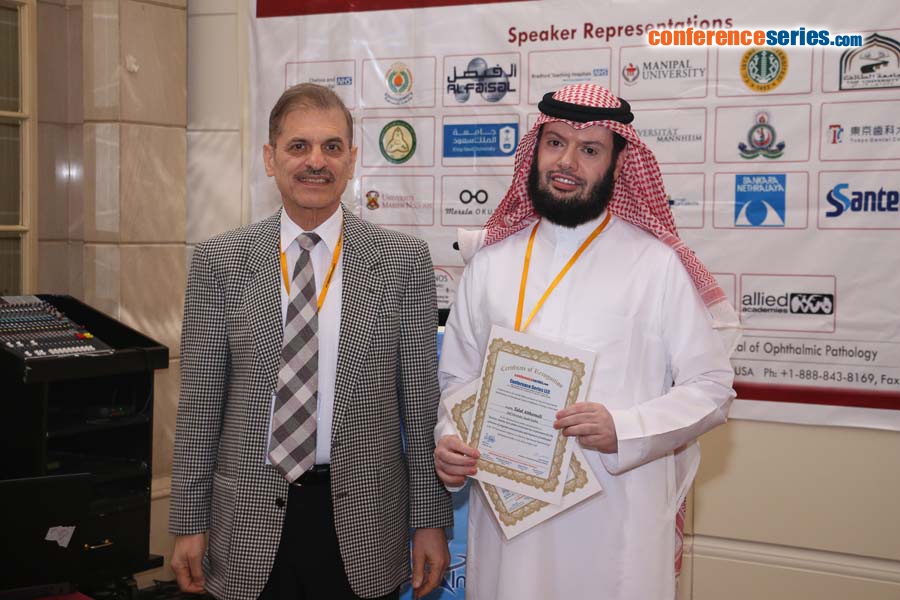
Talal Althomali
Taif University
KSA
Title: Posterior chamber toric phakic intraocular lens implantation for the correction of astigmatic anisometropia and treatment of amblyopia
Biography
Biography: Talal Althomali
Abstract
Amblyopia is one of the leading causes of acquired monocular visual impairment, with an estimated prevalence in the pediatric population ranging from 2.9-7.5%. Younger children, especially those younger than 6 years, with myopic anisometropia greater than 2diopters (D), hyperopic anisometropia greater than 1 D and astigmatic anisometropia greater than 1.5 D are at increased risk to develop persistent and intractable amblyopia without adequate therapy. Previous research has demonstrated that optical correction of astigmatism (i.e., restoration of normal visual input) can be an effective means of treatment for anisometropic amblyopia with astigmatism during early childhood. Unless amblyopia is successfully treated in early childhood, it usually persists into adulthood, significantly increasing the risk of permanent visual impairment. In children with high refractive errors, spectacle correction may not be the most desirable medical therapeutic option due to induction of anisoikonia and potential loss of binocular fusion. Therefore, contact lens wear is the optimal method of medical treatment for high ametropic amblyopia. However, some children resist contact lens wear and both parents and children find the placement of contact lenses to be difficult and distressing .With the availability of toric PIOLs to correct preexisting astigmatism, it is now possible to target emmetropia and achieve a much higher level of spectacle independence in astigmatic patients. Patients with high anisometropic amblyopia with astigmatism could certainly benefit from toric PIOL implantation. To our knowledge, this is the first study that reports the outcomes of the implantation of toric PIOLs in children with anisometropic amblyopia with astigmatism. Eleven eyes of 10 amblyopic patients aged 5 to 15 years underwent toric PIOL (Visian Toric ICL; STAAR Surgical Company, Monrovia, CA) implantation for refractory anisometropic amblyopia. Preoperative and postoperative clinical evaluation included slit-lamp microscopy, visual acuity, anterior/posterior segment examination and cycloplegic refraction. Toric PIOL implantation may be a viable therapeutic modality in children with clinically significant anisometropic ametropia and astigmatism with secondary amblyopia that have been refractory to medical treatment including spectacles or contact lenses. Longer follow-up visits with larger sample populations will evaluate more effectively the long-term efficacy and late-onset of complication.




